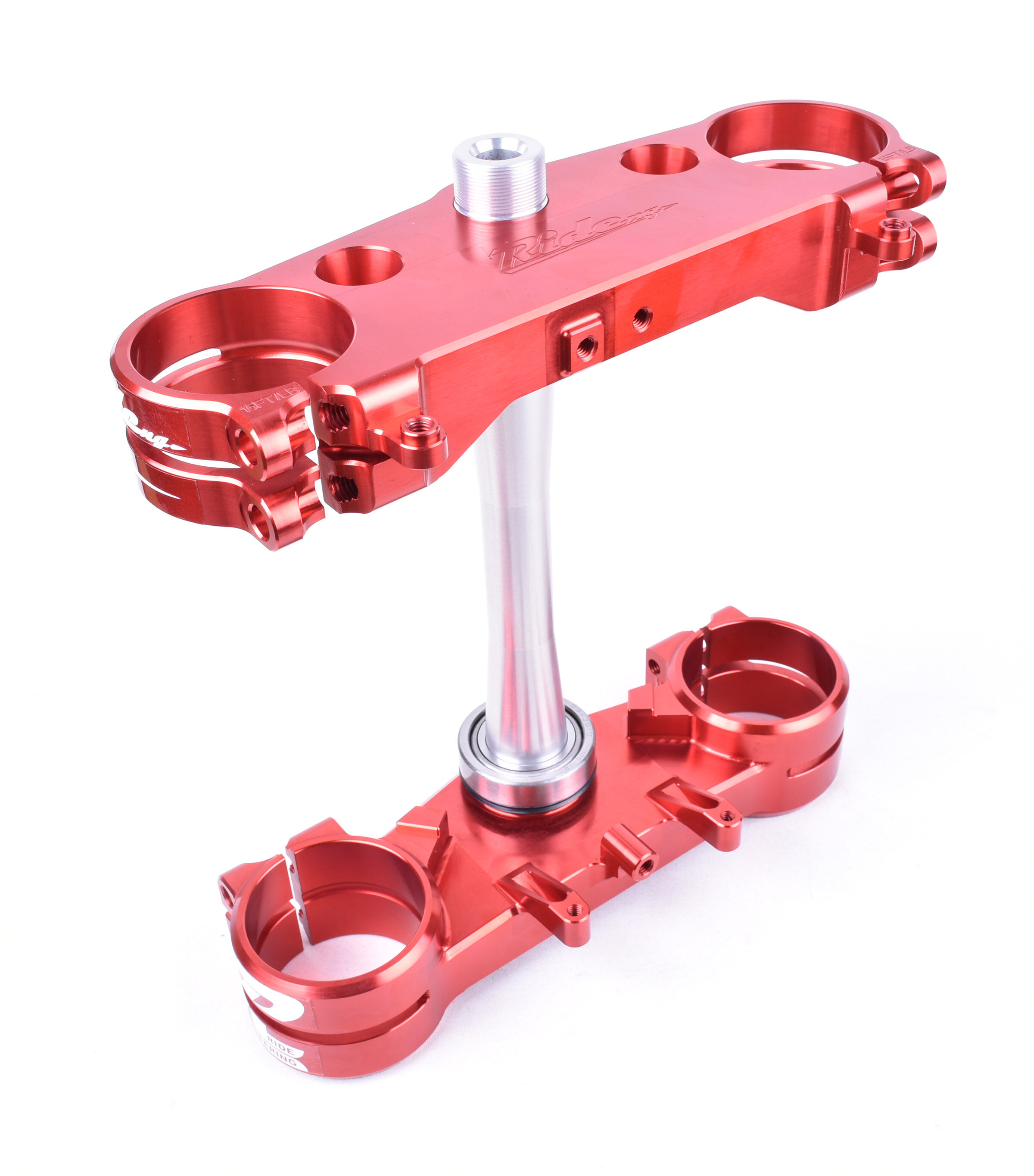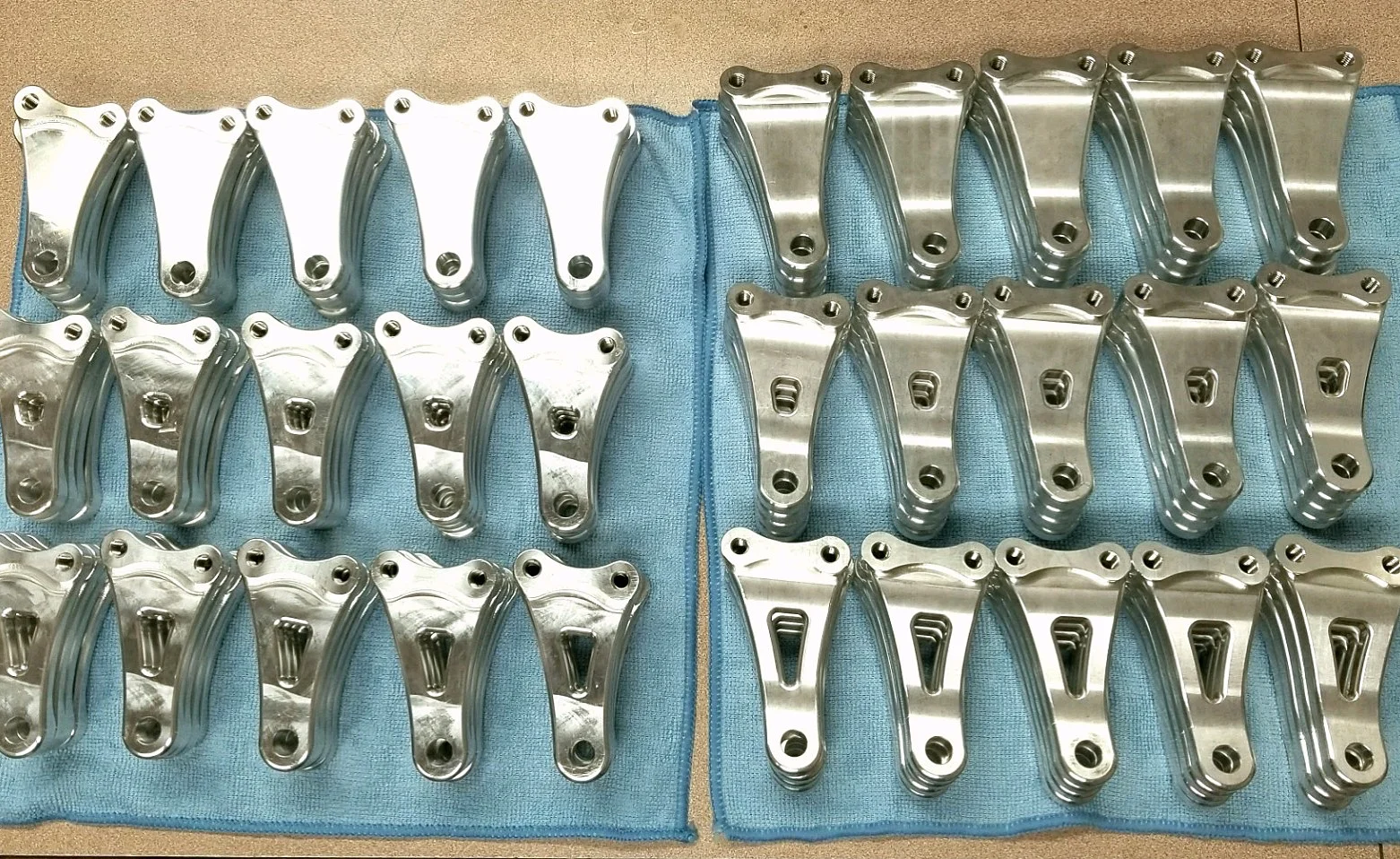I have been looking for some added stability and comfort from my 2021 Honda CRF450R test machine since I got it and although my suspension setting has evolved/improved over time, I still need some compliancy from this machine. I have been working with Adrian over at Ride Engineering on some split triple clamps for over a year now and we finally have come up with a feel that I think is better than stock. I have yet to test any other competitors clamps back to back as Ride Engineering is one of only a couple aftermarket companies that are making different offset clamps. I have tried a 24mm offset on the 2020 Honda CRF450R and really liked how it made the Honda have a “slower” feeling chassis. Slower in this sense was a good thing for the Honda as it calmed the chassis down on rough tracks for me. So in order to get some added chassis compliance, I tested Ride Engineering’s 23.5 offset clamp for the new generation Honda CRF450R and here is what I took away from the test.
Stats:
The Ride Eng. 2021 CRF450R/RX Split Triple clamps are available in Red or Black, come in two offsets and cost $649.90. Custom colors available for $100 additional if you want a custom set. The Ride clamps save you 10oz. in weight and come in 22mm offset or the new 23.5mm option. A Showa steering damper option is available without drilling your frame so no need to stress on that. The bar position on 22mm offset is 8mm forward of stem hole allowing a 5mm or 11mm bar position, with Ride Engineering’s one piece bar mount ($104.95), also available in 7/8” version. The bar position on 23.5mm is 9.5mm forward of stem hole allowing a 6.5mm or 12.5mm bar position with Ride Eng.’s one piece bar mount (I preferred mine set at 12.5mm). Note: Stock OEM bar mounts will fit and affect the numbers above by 2mm (3mm or 13mm on 22s & 4.5mm & 14.5mm on 23.5s).
How Do The Ride Engineering 23.5’s Affect The 2021 Honda CRF450R?:
I will be quite honest with you… We went through a couple of versions before I felt that it was good enough to sell to the public. The first couple versions didn’t have the compliancy I needed nor did we have a different offset yet that I preferred. The first thing that I noticed with the Ride Engineering 23.5mm offset clamps is that it took away some of the dreaded vibration that the 2021 CRF450R has through the bars. Once I pulled out onto the track and started to accelerate I could feel less harmonics/vibration coming through the Pro Taper bars. What I wanted from the 2021 Honda CRF450R (as well as from the Ride clamps) was a calmer entrance in/through corners, less oversteer, better straight line stability, and increase in front tire tracking.
I got all of this with the new 23.5 Ride Engineering setting! With my fork set at 2-3mm in the clamps as well as a rear shock sag measurement of 105mm I had a CRF450R that was less harsh feeling through my hands. Now the Honda didn’t quite give that sting through my arms on flat landings and gave the front end an increased flex feeling. Diving into ruts that start to get hooked, didn’t give me the front end knifing (oversteer) that I experienced at times with a 22mm offset. We call this cornering stability in the testing world and the new 23.5mm setting gave me increased cornering stability. Let’s face it, we all love the way the Honda corners, but sometimes it can corner too good and cause some in consistencies in your cornering technique. This 23.5mm offset Ride clamp still gives you that easy to lean front steering feel of the Honda, but improves area 2-3 (mid-exit) in corners.
Straight line comfort has also been improved thanks to losing some rigidity up near the head tube area. When testing the Honda CRF450R I never could have suspected that the OEM clamp was some of the problem when it came to getting a harsh feeling. Hitting square edge and braking bumps with the 23.5 Ride clamps gave me less harshness and improved my fork feel. The fork now seemed to move more in the stroke and had a slightly softer feel to it, which was nice, but also forced me to adjust my fork setting somewhat. With the Ride 23.5 clamps, I had to stiffen up my fork setting one click and slow the fork don one click also. Doing this gave me a better front tire feel when leaning on throttle. I ended up getting better front tire tracking (when stiffening/slowing the fork) when cutting across rough sections of the track. Once I figured that I could go stiffer with my setting it actually brought up the performance/comfort feel of the Honda CRF450R. The stock torque specs of 15 ft. lbs. on the top clamp and 12 ft. lbs. on the bottom clamp is recommended, but if you end up purchasing a raw/silver clamp, you can go to a 14/11 setting.
So what’s the negatives? Honestly for a vet rider like myself, there aren’t too many… I do know that this isn’t a cure all for the rigidity issues of the CRF450R, but it does help a noticeable amount. When I let another Honda rider/owner try my test bike with the clamp, he immediately thought his OEM clamp was too stiff feeling. The negative for me is that you may have to adjust your suspension (to compensate for the softer feeling clamp) a little after installation, but to me having to do some minor clicker adjustments isn’t too much to ask for added comfort. Plus, y’all are Honda owners. You’re used to tinkering on your bikes right? I know I am when I ride this machine. This Ride Engineering 23.5mm offset split clamp will eliminate some of the tinkering you’re doing at the tracks most days by 40%, so you can ride more and be a test rider less.
If you do end up getting the red colorway, please try to cover your clamps up with a towel or something when your bike is siting in the pits. The sun will fade the anodizing over time, so bring an EZ-UP or a towel to cover up your investment. These clamps are sexy looking so take care of them! If you’re a C rider worried about if you will lose that cornering ability of your Honda, have no fear, adding these clamps to your machine will not negatively affect how easy the Honda will lay over in corners. In fact, it might help you improve your corners as the CRF450R will setting into the corners better with this 23.5 offset.
There is a discount code available if you decide that this may be something you're interested in. KT20 will save you 20% off your order over at ride-engineering.com. If you have any questions or concerns about this test please feel free to email me at kris@keeferinctesting.com.









